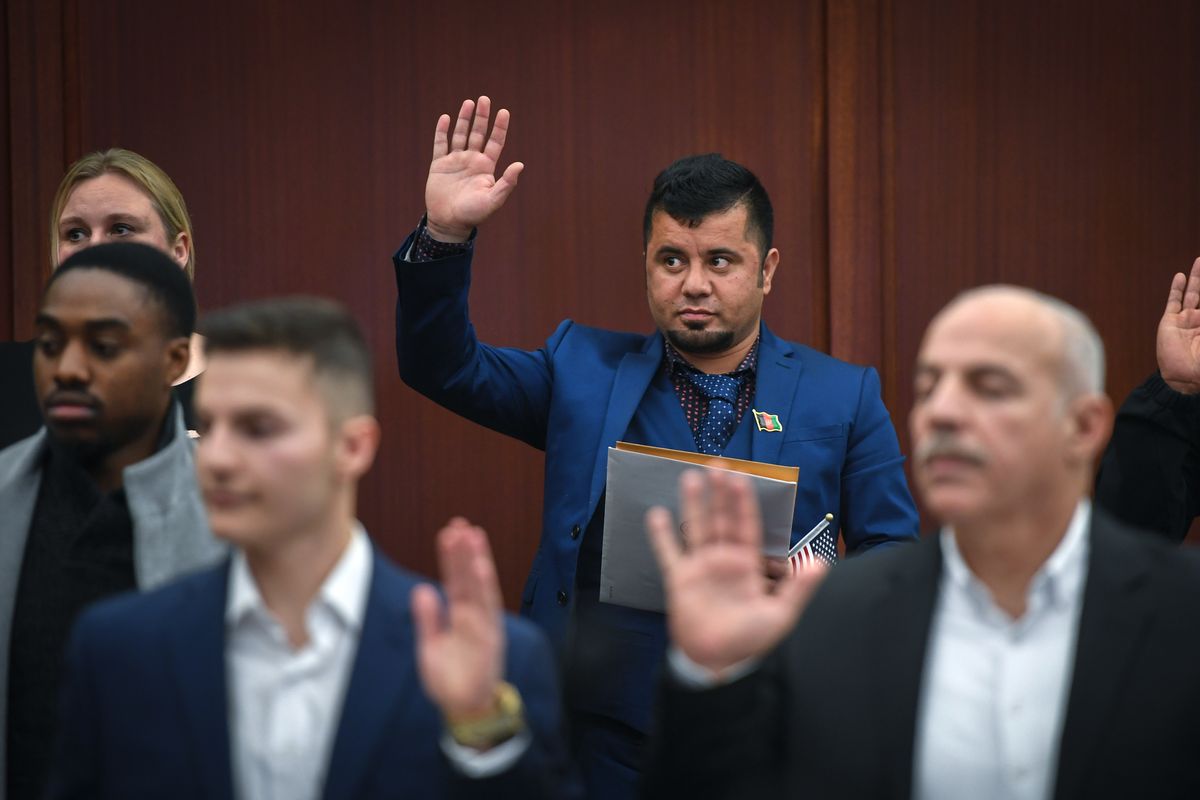We the People: The three ways to attain citizenship

Each week, The Spokesman-Review examines one question from the Naturalization Test immigrants must pass to become United States citizens.
Today’s question: How can people become United States citizens?
As Spokane gears up to host around 300 refugees from Afghanistan, the question of citizenship looms for refugees and locals alike, much like it was a focus for my family – refugees from Afghanistan – in the last few years.
Nearly a million individuals are naturalized in ceremonies across the United States every year. There are three paths in the United States to become a citizen.
The first and most common is birthright citizenship – which means anyone born in the United States is automatically a citizen even if their parents are not citizens. Although people are born U.S. citizens if they are born abroad to U.S. citizens, the process of gaining a citizenship can be much more difficult.
A more popular route noncitizens and most Afghans will take to be a citizen is through a process called “naturalization,” a system by which a green card holder becomes a U.S. citizen after living in the U.S. for a period of time, usually three to five years. To get naturalized, applicants must first be in possession of a green card – which gives its holder the right to permanently live or work in the United States – or a visa.
“Many Afghans admitted to the United States will arrive with a Special Immigrant Visa or with an application for that visa in the works,” said Megan J. Ballard, a professor of Immigration Law and Policy at Gonzaga University School of Law. “While this is different from a person admitted as a resettled refugee, the process of becoming a naturalized citizen is similar.”
The “Special Immigrant” category includes people who have served or worked with the U.S. Armed Forces.
After gaining a visa or a green card, the next step on this path is to live in the United States for a certain number of years, typically five years. After this residence requirement is met, the process includes a lengthy application and an in-person interview.
These steps require that a person prove their “good moral character,” confirm their support for the principles and ideals of the U.S. Constitution, demonstrate basic English-language proficiency, and pass a test on U.S. history and government. If the U.S. Citizenship and Immigration Service approves the application and the person passes their interview, the last step is to take an oath of allegiance to the United States.
“There was an array of emotions,” my older brother, Aziz Moltafet, said looking back at the oath of allegiance ceremony which was held during World Refugee Day in 2018 at Nevada Park in Spokane. “That was my first citizenship ever and I felt so much comfort knowing this was my new home.” Out of three brothers, including me, Aziz is the only one to have taken a naturalization test. The remaining brothers took an alternative route – through derivative citizenship. This process allows children of U.S. citizens to acquire U.S. citizenship from their parents who have become naturalized.